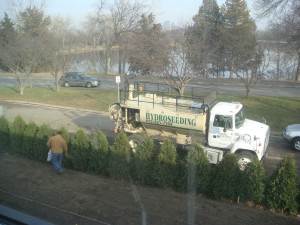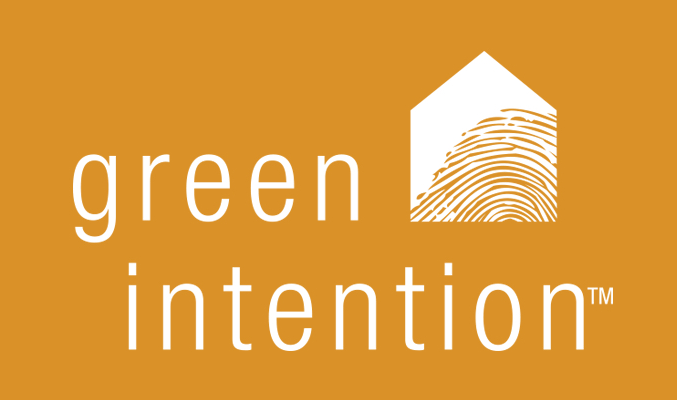 This credit here is worth one point, and it is broken down for previously developed sites and not previously developed. For a site that is not previously developed, there has to be a tree or plant preservation plan with “no-distrubance” zones clearly delineated on drawings. You also have to leave at least 40% of the buildable lot area undisturbed (not including the area under the roof). That seems pretty stringent, but it does not apply to us.
This credit here is worth one point, and it is broken down for previously developed sites and not previously developed. For a site that is not previously developed, there has to be a tree or plant preservation plan with “no-distrubance” zones clearly delineated on drawings. You also have to leave at least 40% of the buildable lot area undisturbed (not including the area under the roof). That seems pretty stringent, but it does not apply to us.
For previously developed sites like ours, we have two options:
- Build on site with a lot area of less than 1/7 acre, or with housing density for the project that is equal to or greater than 7 units per acre.
Since we have already chosen our location, we really have no control over the housing density of our neighborhood, and it is probably about 4 housing units per acre as opposed to 7. Our lot is 1/3 acre, not 1/7, so we have to look at the next option for a previously developed site like ours:
- Develop a tree or plant preservation plan with “no-disturbance” zones clearly delineated on drawings and on the lot, and rehabilitate the lot by undoing any previous soil compaction, removing existing invasive plants, and meeting the requirements of SS 2.2.
We have not yet gotten to SS 2.2., but we meet all of its requirements except the ‘drought-tolerant turf.’ Our landscapers didn’t recommend it. So it looks like we do not get the point here, which is somewhat troubling, because this credit “encourages preservation of existing vegetation to minimize destruction of habitat.” That assumes that what was there before was natural, indigenous, native, or whatever. We did preserve several of the trees, namely 4 large maple trees, five or six large pines (white and Norwegian), and four river birches. We also had to take down many trees that were on the site — either because they were overcrowding healthy trees and threatening their survival, or because they were non-native invasive shrubs/bushes, or because they were simply too close to the house and the roots would damage the foundation. We more than made up for what we took down by planting trees (many more than we took down) that are appropriately spaced apart, a good distance from the house’s foundation, and native. We have a very large area of no-mow grass and native wild flowers. But our turf is not drought-tolerant, so we don’t get the point here, and will get penalized for that in the next section.
This is somewhat troubling, even though it’s only one point. It’s more the principle: I believe our intent for the site matches the intent of the this credit: “A project built on a previously developed site must earn this point by rehabilitating the site rather than preserving it.” If anyone did a before/after, there can be no doubt we rehabilitated the site, yet we do not get credit (more on drought-tolerant turf in SS2.2 – Basic Landscape Design). Overall, though, I think we appropriately disturbed the site and will make the trees, habitat, and site more sustainable in the long run. In the end, that is more important than the point.
Sustainable Sites points so far: 0
Cumulative points: 14
Additional points needed to get to Gold: 74
